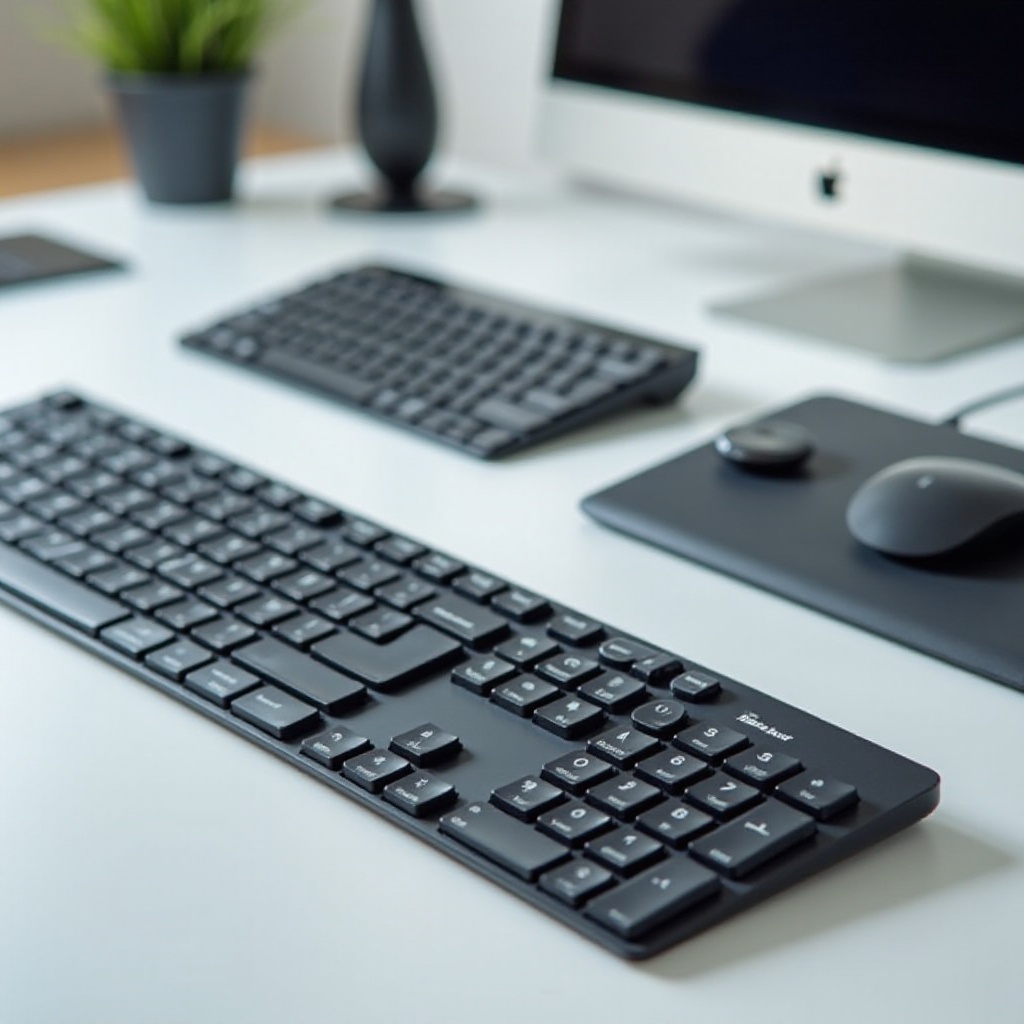How Long Is a Computer Keyboard? A Complete Guide
Introduction
Many users often wonder, 'How long is a computer keyboard?' The answer greatly depends on the type, model, and additional features. Whether you're a professional typist, a dedicated gamer, or someone who uses a keyboard casually, knowing the specifics can make a huge difference in your overall experience and satisfaction. This comprehensive guide will help you understand standard keyboard sizes, the factors influencing their lengths, popular models, and how to measure and choose the right one for your needs.

Standard Keyboard Sizes
Computer keyboards come in various sizes, each catering to different needs and preferences. Here's a breakdown of the most common ones:
-
Full-Size Keyboards: These are usually about 17 to 18 inches long and come with a numeric keypad, function keys, and navigation keys. Full-size keyboards are ideal for users who need all the keys at their disposal, such as accountants and writers.
-
Tenkeyless (TKL) Keyboards: Without the numeric keypad, these keyboards are about 14 to 15 inches long. They save desk space and are easier to transport, making them a favorite among gamers and those who require more mouse movement space.
-
Compact and Mini Keyboards: With lengths ranging from 11 to 13 inches, these keyboards omit several keys and combine functionalities. They are perfect for minimalists and frequent travelers.
Understanding these standard sizes can help you find a keyboard that balances your space requirements with functionality.
Factors Influencing Keyboard Length
The length of a keyboard is influenced by various factors. Let's explore some of these key elements to better understand what affects keyboard dimensions:
Key Count and Layout Variations
The number of keys on a keyboard significantly affects its length. Full-size keyboards with 104 keys will naturally be longer than compact or mini keyboards with around 60-87 keys. Layout variations such as QWERTY, AZERTY, and ergonomic designs also play a role in the overall length.
Additional Features
Additional features like built-in wrist rests, macro keys, and multimedia controls can add to the length of a keyboard. Gaming keyboards often include programmable keys and backlit features, which contribute to their length.
Wired vs Wireless Configurations
Whether a keyboard is wired or wireless may affect its design and length. Wired keyboards may feature additional space for cable management, while wireless keyboards benefit from compact designs due to the absence of connection ports.
These factors make it clear that the length of a keyboard is not standardized and can vary significantly based on its design, feature set, and intended use.
Measuring Your Keyboard
If you're unsure about the length of your keyboard, measuring it is straightforward. Here’s how:
Step-by-Step Guide
- Place the Keyboard on a Flat Surface: Make sure your keyboard lies flat on your desk.
- Use a Measuring Tape or Ruler: Measure from one edge of the keyboard to the other, including any attached wrist rests or additional features.
- Note the Measurements: Write down the measurements in inches or centimeters.
Tools for Measurement
- Measuring Tape: Flexible and typically used for more extended surfaces.
- Ruler: Ideal for shorter distances and smaller keyboards.
- Digital Caliper: Offers precise measurements for more intricate components of the keyboard.
Measuring allows you to better understand your space constraints and preferences, helping you make a more informed choice when purchasing a new keyboard.

Popular Keyboard Models and Their Lengths
Different keyboard models come with varying lengths suited to specific needs. Here’s an overview of popular types:
Full-Size Keyboards
Examples include the Logitech K120 (18 inches) and the Razer BlackWidow Elite (17.6 inches). These models are suitable for users requiring a numeric pad and additional function keys.
Tenkeyless (TKL) Keyboards
The Corsair K63 (14.4 inches) and the Ducky One 2 TKL (14 inches) are great examples. Their reduced length makes them ideal for gaming setups where mouse space is essential.
Compact and Mini Keyboards
Keyboards like the Anne Pro 2 (11.18 inches) and the RK61 (11 inches) are designed for portability while still providing essential functionalities. They are perfect for minimalists and travelers.
Knowing the lengths of popular models can help you quickly narrow down your options based on available space and functional needs.
Choosing the Right Keyboard for Your Needs
Selecting the right keyboard depends on your specific use case. Here’s how to choose:
For Gamers
Gamers often prefer TKL or compact keyboards like the Logitech G Pro or the Corsair K65 LUX. These keyboards save space for mouse movement and offer specialized gaming features.
For Work and Daily Use
Full-size keyboards with numeric keypads, such as the Microsoft Ergonomic Keyboard and the Apple Magic Keyboard, are well-suited for professionals who require all keys within easy reach.
Ergonomic Keyboards
If you prioritize comfort, ergonomic keyboards like the Kinesis Advantage2 or the Logitech Ergo K860 are designed to reduce strain and enhance typing comfort.
Matching a keyboard to your specific needs ensures a more efficient, comfortable, and enjoyable experience.

Conclusion
Understanding the length and types of computer keyboards allows you to make informed decisions that meet your unique requirements. Whether you opt for a full-size, TKL, or compact keyboard, the perfect choice depends on your specific needs and preferences.
Frequently Asked Questions
What is the standard length of a full-size keyboard?
Typically, a full-size keyboard measures around 17 to 18 inches in length.
How do I choose the right keyboard size for gaming?
Opt for TKL or compact keyboards that save desk space and allow for extensive mouse movement.
Are compact keyboards suitable for professional use?
Yes, especially if you prioritize desk space and portability. However, ensure it meets your key requirements.



